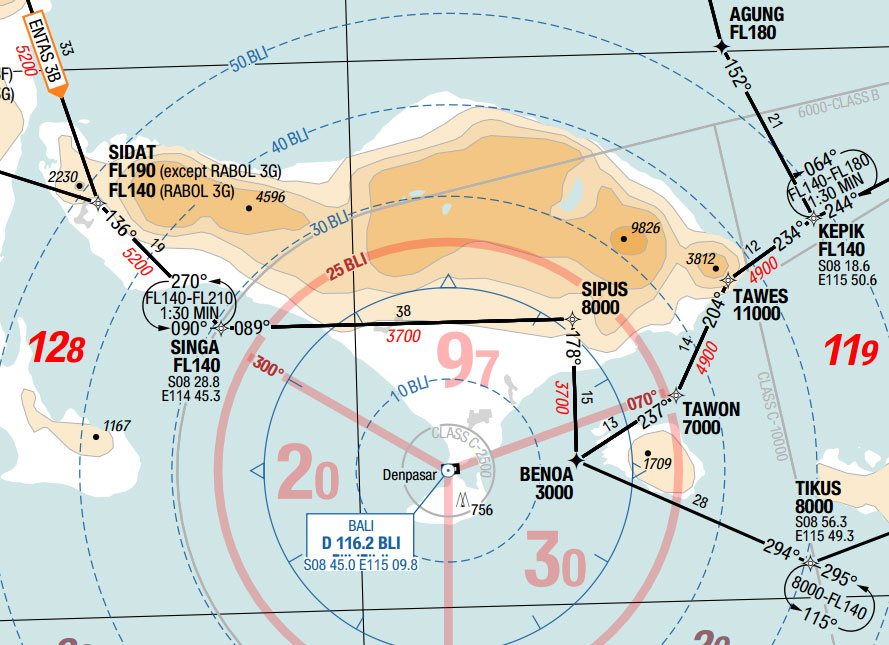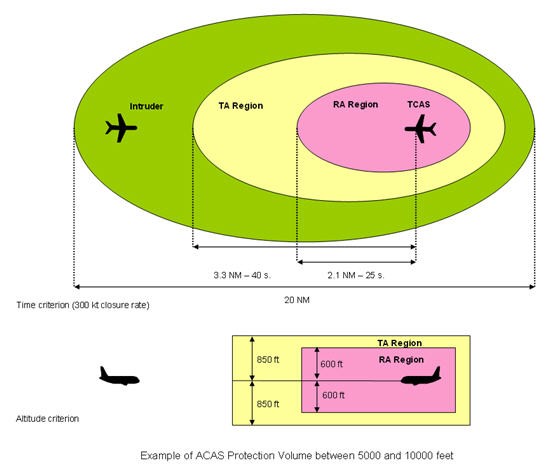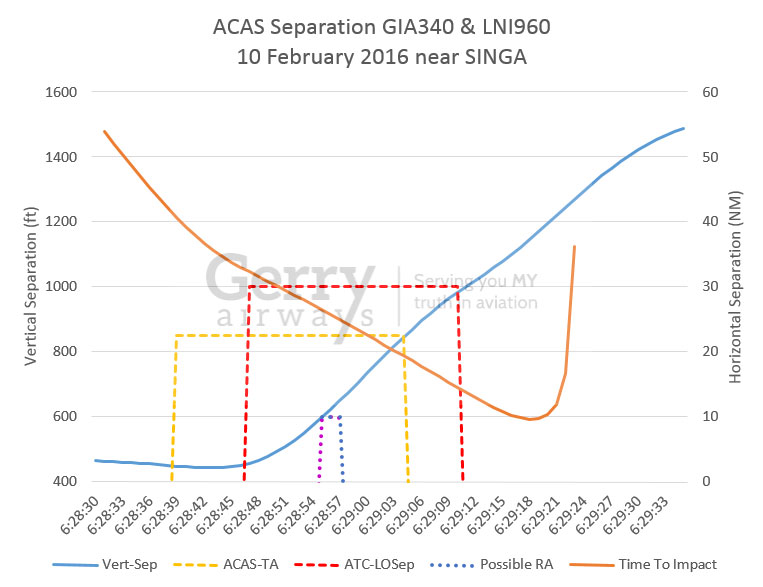After receiving the ADS-B data logs on the suspected near-miss, the analyzing immediately started, and it quickly provided more definitive answers.
Background
The monsoon season often cause disruptions to air travel, especially in the period near the Chinese Lunar New Year. On 10 February, a rainstorm hit Ngurah Rai Airport in Denpasar Bali, causing a significant number of flights to enter several holding patterns while waiting for the weather to improve, and land. (Click here for the article)
On 11 February, allegations of a near miss in one of the holding patterns used the previous day began to circulate. Official statements were quickly made by the ATC services provider AirNav, and also by the DIrector General of Civil Aviation. Unfortunately the statements contradicted each other, and the increased number of queries regarding the suspected near-miss began to annoy me, resulting in the article warning people of the weaknesses of using Flightradar24 replay facility for determining the severity of a loss of separation (Click here for the article).
In that article, I stated that to determine while it was easy to see a loss of separation, to determine a near-miss, require more detailed data. I then appealed to several members of the Indonesian ADS-B (Automated Data Surveillance – Broadcast) feeders and enthusiasts for anyone having a data-log of the event to send a copy to me. This article, is based on the log data set received.
Data Collection and Output
Data Collection
The data was received on 11 February evening containing:
- Flight LNI 960 on 10 February 2016:
- From 05:03:40UTC to 07:12:31UTC
- 504 ADS-B position reports
- Flight GIA340 on 10 February 2016:
- From 5:57:40UTC to 7:19:43UTC
- 320 ADS-B position reports
From this data set, the portions used to analyze the alleged near-miss were:
- LNI960 from 06:27:30 to 06:32:55 containing 32 positions
- GIA340 from 06:27:26 to 06:32:58 containing 30 positions
Data Interpolation
Due to the irregular data intervals and the need to have time-synchronized positions of the 2 aircraft for analysis, interpolation was done for each timestamp that was only reported by only one of the aircraft involved. The position of the other aircraft is interpolated to the same timestamp using time-weighted straightline interpolation. This was perfomed for the following variables:
- Latitude
- Longitude
- Altitude
As a consequence to the interpolation, some of the data will not produce the standard ADS-B altitude intervals, but is deemed insignificant to the need for synchronized data.
Data Output
The output from the data yielded the followingL:
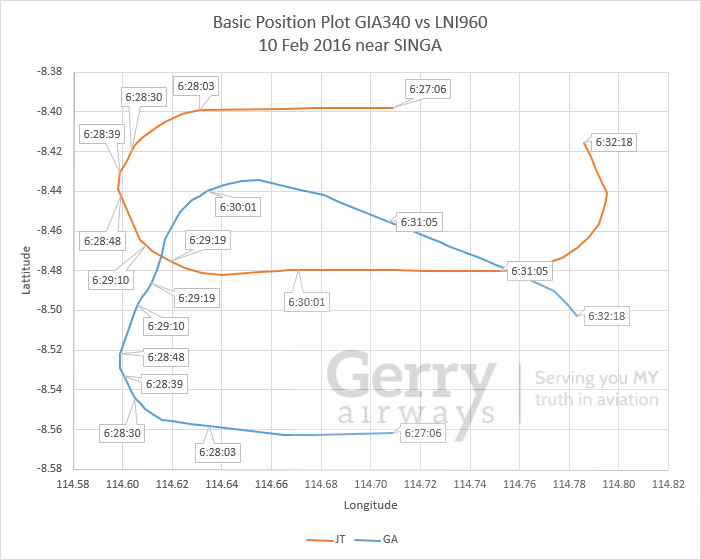
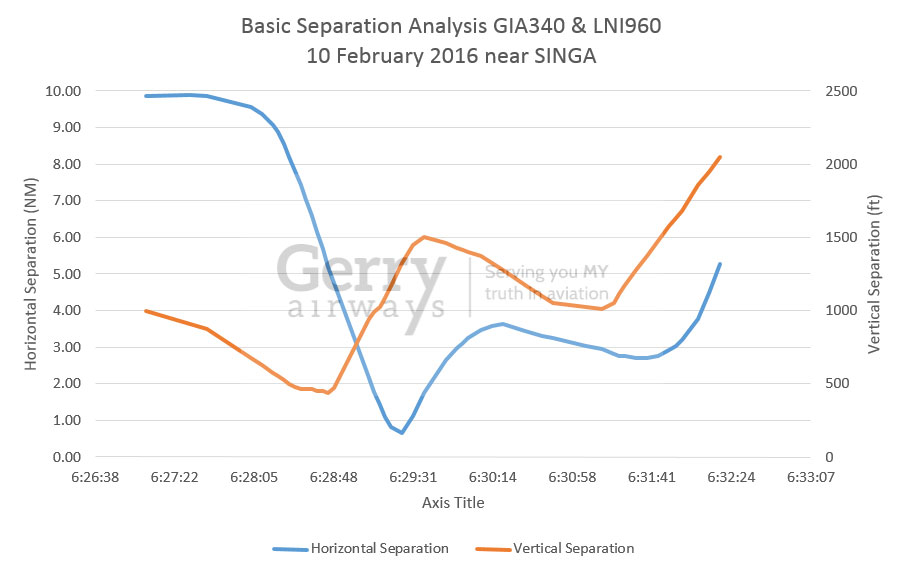
Criterias used to determine aircraft separation status
ATC Separation
The aircraft separation standards in Indonesia is dependent upon the level of the controlling facility. For radar control:
- Area Control Center (ACC) in Indonesia require 10 nautical mile horizontal separation and 1000ft (2000ft if above 29,000 ft and not in RVSM airspace) vertical separation.
- Approach Director (App) in Indonesia use 5 nautical mile and 1000ft of separation.
When the separation criterias are not met, this analysis use the following classification:
- Loss of Separation (LOSep): less than 5 nautical mile and 1000ft.
- Near-Miss: less than 3 nautical mile and 700ft.
Airborne Collision Avoidance System (ACAS)
The ACAS separation criteria used in this analysis is as follows:
“Near-Miss” in this case, use the ACAS Resolution Advisory (RA) criteria.
Findings
Loss of Separation (LOSep)
The data reveals a LOSep between 6:28:48 and 6:29:10. However, only 3 positions are reported within this period.
- 6:28:45, H = 5.20NM, V = 438ft, Normal
- 6:28:48, H = 4.77NM, V = 468ft, LOSep
- 6:29:07, H = 2.15NM, V = 943ft, LOSep
- 6:29:10, H = 1.78NM, V = 988ft, LOSep
- 6:29:13, H = 1.41NM, V = 1025, Normal
H: horizontal separation. V: vertical separation.
The loss of separation did not meet the used near-miss criteria.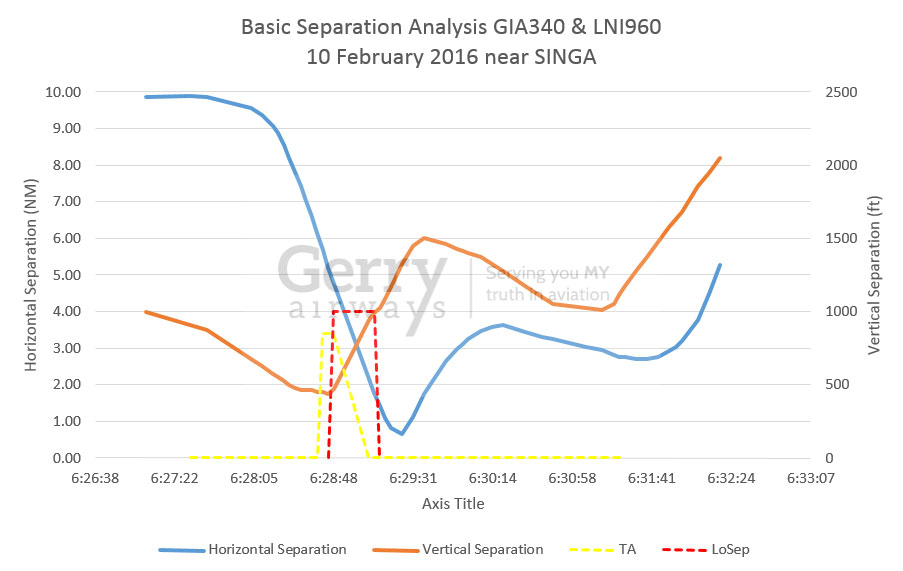
ACAS Advisory
The data reveals that ACAS would provide a Traffic Advisory (TA) between 6:28:42 and 6:28:48. Only 3 positions were broadcasted during this period.
- 6:28:39, T = 43 seconds, V = 450ft, Normal
- 6:28:42, T = 36 seconds, V = 450ft, TA
- 6:28:45, T = 33 seconds, V = 438ft, TA
- 6:28:48, T = 33 seconds, V = 468ft, TA
- 6:29:07, T = 16 seconds, V = 943ft, Normal
T: time based horizontal separation. V: vertical separation.
No positions that would result in a Resolution Advisory (RA) was found. However, with the continuous declining T values even as the separation status moved from TA to Normal, and that the T value for the first Normal status, was below the horizontal RA threshold (25 seconds), further analysis is required to determine the likelihood of an RA being generated in that time period.
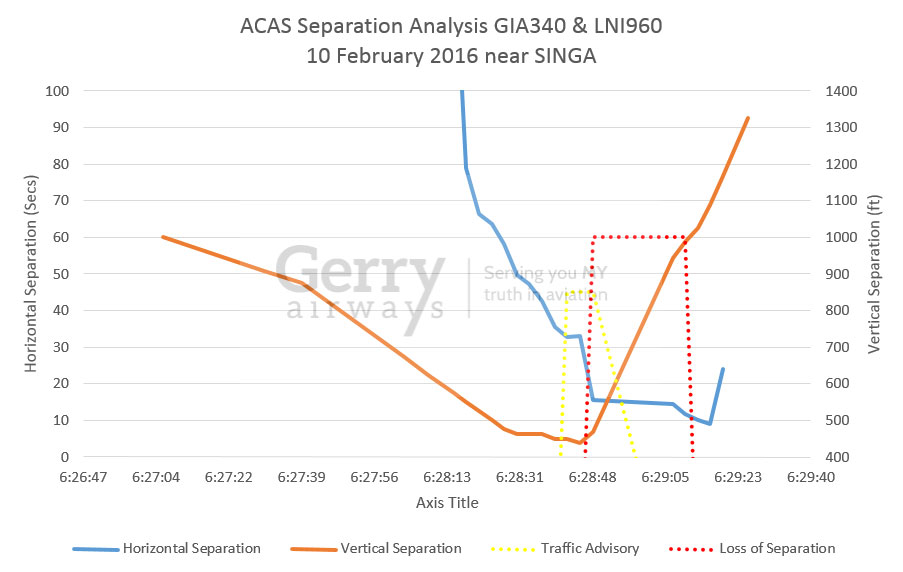
Advanced Analysis
Potential for Resolution Advisory
Data output for the findings stage did not generate an instance of a Resolution Advisory (RA). However, the potential for an RA exists at:
- 6:28:48, T = 33 seconds, V = 468ft, RA(V)
- 6:29:07, T = 16 seconds, V = 943ft, RA(H)
Like in a TA, an RA is generated when both the horizontal and vertical criterias are met. At the positions stated above, we can see that the criteria fulfilled moves from one plane to the other, over a period of 19 seconds. As most near-misses in the world are with ACAS Resolution Advisories that lasted for less than 20 seconds, we need to look at the period between 6:28:48 and 6:29:07 in more detail.
Non-linear Data Interpolation
To obtain a more aircraft positions than the data sets provided, a non-linear interpolation is used for each aircraft using existing data as anchor points for a curve to be calculated on the horizontal and vertical planes (including vertical speed), using the MATLAB software.
The non-linear interpolation produced by MATLAB is based on the reported aircraft positions between 6:28:37 dan 6:29:11. Once the output was analyzed along with the LOSep and ACAS criteria, the following table is produced:
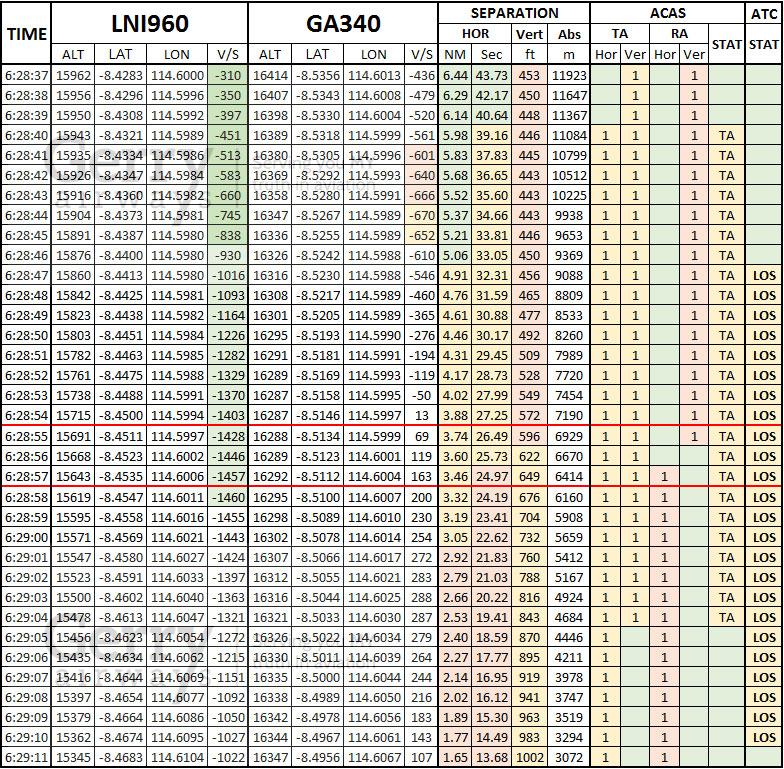
Findings based on non-linear interpolation
It is found that:
- Prior to the TA and LOSep, both aircraft were descending.
- Prior to the TA and LOSep, the vertical separation between the 2 aircraft were already below 1000ft.
- LNI960 was already increasing its descent rate from before the TA was generated (6:28:40) until 6:28:58.
- After TA was generated at 6:28:40 the descent rate of GIA340 increased until 6:29:43 causing the vertical separation of the two aircraft to not increase until 2 seconds prior to the ATC LOSep.
- From 6:28:45, GIA340 stopped it’s descent and even climbed slightly from 6:28:54.
- RA criteria is not met during this period.
- RA(V) condition ceased at 6:28:55
- RA(H) condition commenced at 6:28:57
- The absolute distance between both aircraft were:
- Above 11 kilometers at the start of the TA
- Above 9 kilometers at the start of the LOSep
- Under 4.7 kilometers at the end of the TA
- Still above 3.2 kilometers at the end of the LOSep
It can be concluded from the non-linear data interpolation that the potential for a Resolution Advisory to have occured is extremely small or extremely unlikely.
Eyewitness “statement”
The eyewitness that was said to be a passenger sitting in GIA340, stated that the both aircraft were within very close proximity. The data does agree that both aircraft were close.
“Flew very close. I have never seen another aircraft fly so/that close before”
Separation of the 2 aircraft can be found in the following:
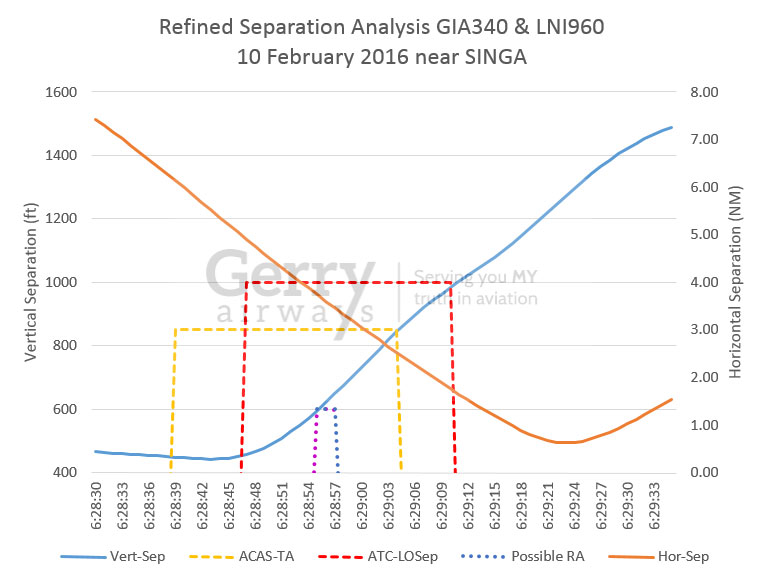
A direct distance measurement would be more fitting to cross check against the eyewitness’ claim:
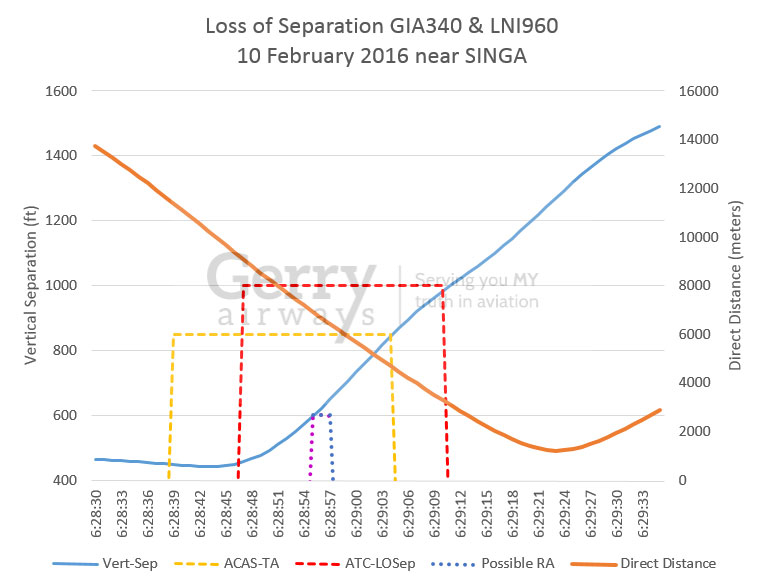
As both aircraft converged, the absolute separation was never below the minimum safest distance of 300 meters, that is when one aircraft is directly on top of the other with 1000 feet separation.
“Right at the very last moment, the pilots of both aircraft turned their aircraft to the left to avoid a collision.”
While this is a dramatic statement, one should ask if the eyewitness statement is accurate if he/she was a passenger. In the following position plot, we can see the problem with the eyewitness claim.
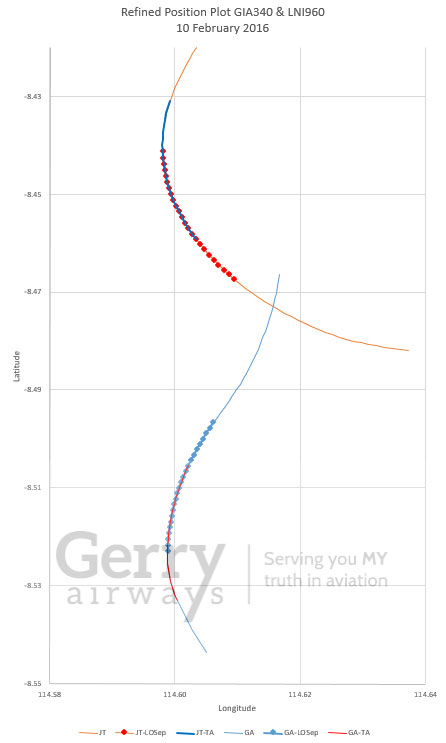
If the witness is a passenger who sat on the left side of GIA340, the witness would not be able to see the position of the incoming Lion Air aircraft from his passenger window because:
- Throughout the TA, the position of LNI960 was in FRONT of GIA340 and not to its left.
- Throughout the LOSep, LNI960 would only come into view at the very end of the LOSep and appear in a position that is barely within the possible viewing angle for a the passenger, and that the vertical separation between the aircraft was approaching 1000ft and increasing.
- When GIA340 turned left, ACAS TA had already ceased for 10 seconds and that the LOSep had also ceased for 5 seconds.
Therefore, the dramatic eyewitness account, if true, is unlikely to be from passenger and that the position of the other aircraft could only have been seen from the flight deck
Pilot understanding of ACAS TA and RA
In the discussion to several sources from the field of aircraft and flight operations, regarding ACAS, it is found that in Indonesia:
- There are still airline pilots that cannot tell the difference between Traffic Advisory and Resolution Advisory.
- There are still airline pilots that do not know the appropriate action when receiving a TA or RA.
- There are still airline pilots that conduct evasive maneuvers during a TA (when it is not or not yet required).
- There are still airline pilots who take evasive maneuvers during an RA whose maneuvers do not follow or even contradict the generated RA instructions.
However, without access to the Cockpit Voice Recorder, Flight Data Recorder and/or Quick Access Recorder, whether the above concerns happened during this event, cannot be determined.
Conclusions
Based on the data, findings and analysis performed, it can be concluded that:
- ATC Loss of Separation did occur, but not to the extent of a near-miss.
- ACAS Traffic Advisory was likely to have been generated.
- ACAS Resolution Advisory was extremely unlikely to have been generated.
- Eyewitness claiming to be a passenger would not be able to see the other aircraft throughout the TA and LOSep, except for the final seconds of the LOSep had the passenger squeezed himself/herself into a position allowing for an extreme viewing angle from the passenger window.
- If the eyewitness did see another aircraft during the TA or LOsep, it can be concluded that the eyewitness needed to be in the flight deck of one of the aircraft involved.
- To know definitively whether or not a Resolution Advisory was generated, data from the Flight Data Recorder or Quick Access Recorder is required. The non-linear data interpolation, while being the best that can be obtained, does have it’s limitations preventing it from use to conclude if a momentary RA was generated.
- To analyze points 4 and 5 in further detail, a 3D motion analysis is needed to analyze in detail the viewing angles based on the aircraft orientation and positions, plotted onto an accurate geographic position model.
Disclaimer:
The basis of the facts collected are known, as are the methods of analysis used, however readers are and have been warned about the limitations of the analysis based on the data available for this article, and that the analysis contained herein is a personal analysis and carries no official weight.
Sources:
- AY – ADS-B Data Collector
- Riazy Aulia Ramadhan Harahap – Non-Linear Interpolation Data Analyst
- EN – Flight Operations / Pilot
- YS – Flight Operations / Pilot
- BH – Flight Operations Management
- IB – ATC

